
- Programs & Services
- Learning & Development
- Health & Wellness
- Faith & Traditions
- Economic & Financial Planning
- Community Engagement
- Support Services
- News
- Upcoming Events
- Watch Now
- Opportunities
- the.ismaili
- Feedback
- Login
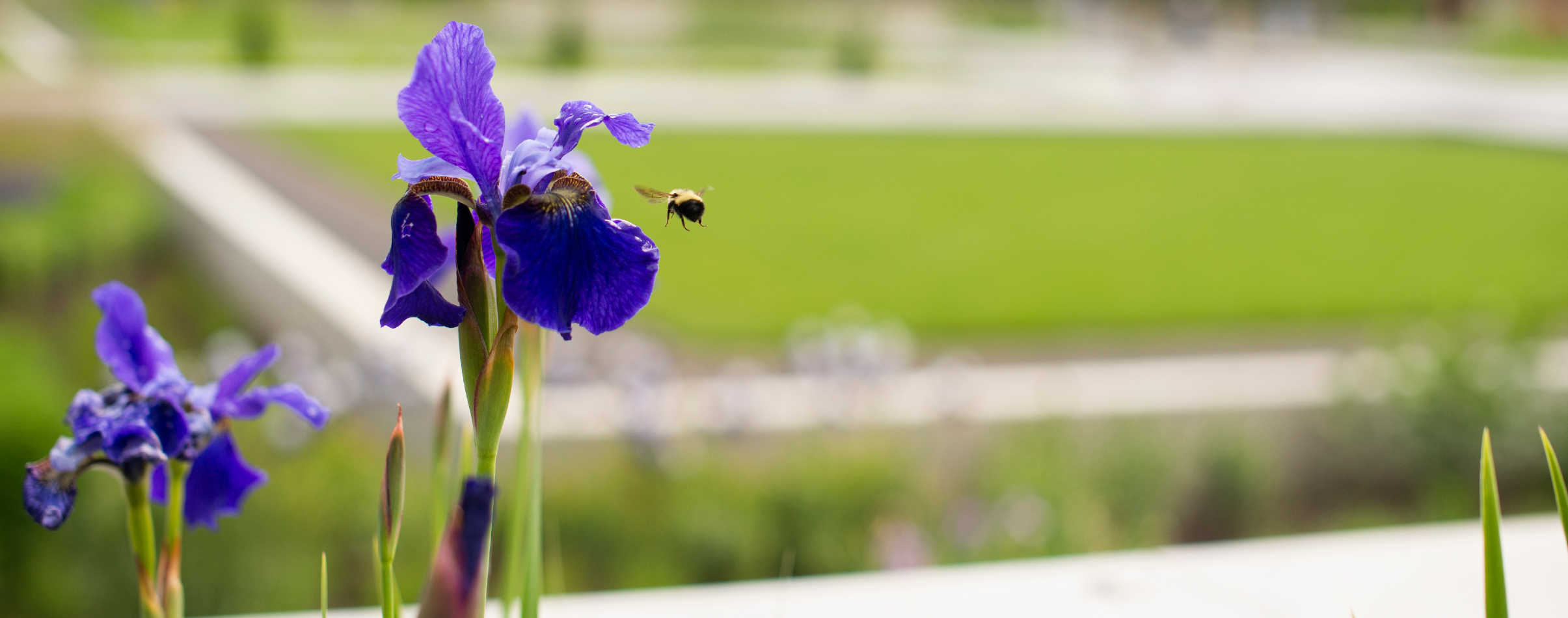
Last year, the United Nations released a landmark report on biodiversity around the globe. Its findings show that more than one million species of plants and animals are threatened with extinction—in large part because of human activities, including unsustainable farming practices, logging, overfishing, poaching and pollution.
A prime example of this habitat loss comes from the Canadian Grasslands, a vast ecosystem that stretches across Alberta, Saskatchewan and Manitoba. Today, about 25% of the native grasslands remain. Most of the grasslands have been intensely altered to cultivate crops. Other sections have been fragmented to build cities and roads, resulting in the loss of natural habitats, such as prairies, forests and wetlands, which keep air and water clean, and prevent flooding through natural filtration systems.
Part of learning how we can protect our grasslands is becoming more familiar with the native plants that give Canada its unique beauty and make the planet more liveable. Public gardens and botanic research centres, such as the Aga Khan Garden in Edmonton, grant us opportunities to learn about and build connections with nature.
“The garden tradition is the high calling of human stewardship, our responsibility to honour, to protect and to share the gifts of the natural world,” said His Highness the Aga Khan at the inauguration of the garden in 2018.
As the world’s northern-most Islamic garden, Edmonton’s Aga Khan Garden was designed with a mix of native and non-native plants, reflecting the harmonious relationship between the aesthetic and spiritual traditions of the Muslim world and the lands that make up Canada today. This photo essay features some of the native prairie plants that you may encounter on your next visit to the garden.
The Aga Khan Garden utilizes many native prairie grasses to create an ornamental effect.
Blue Grama grass (Bouteloua gracilis) is short prairie grass with very fine leaves. It is characterized by its blue-green seeds, which hang delicately from the tips of each stem like tiny feathers. This plant can thrive in a variety of soil types and is known for being exceptionally resistant to drought.
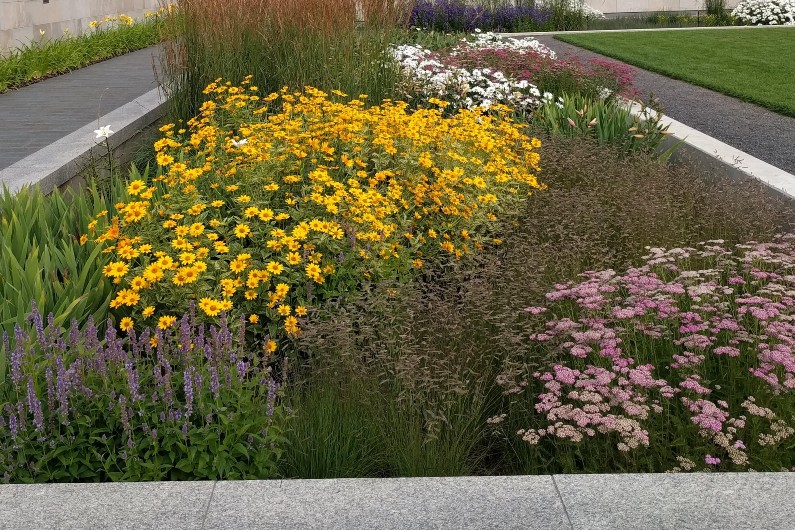
Tufted hairgrass (Deschampsia cespitosa) is so named because it grows in a clump-like shape. It is one of the few ornamental grasses that thrives in the shade; however, it will not flower if given too much shade. In the summer, it produces flower stems which bloom in various colours. When in bloom, its flowers seem to hover like a cloud over its tall-bladed leaves.
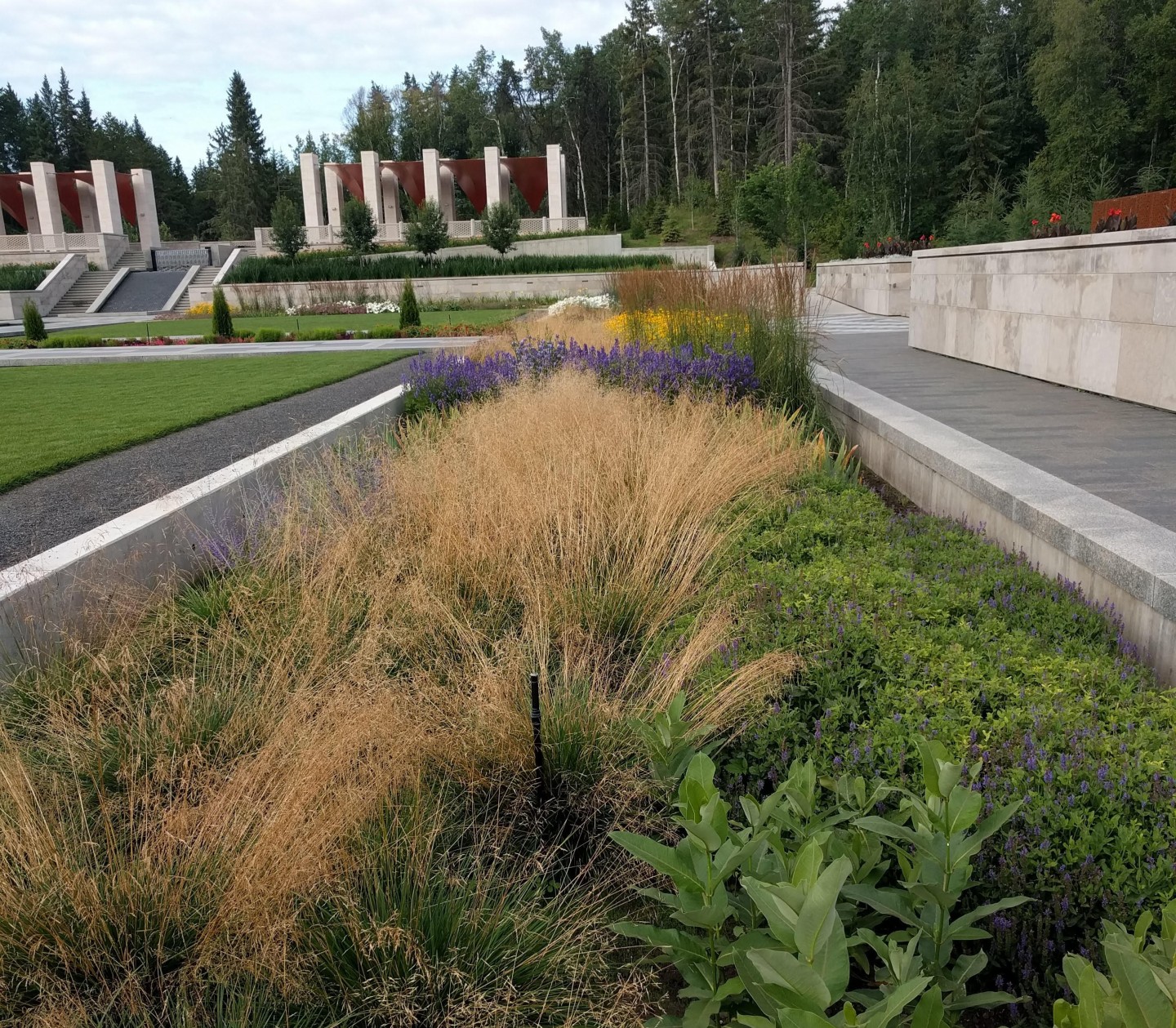
Sweetgrass (Hierochloe odorata) is revered as a sacred plant amongst many Indigenous people across North America. It is a perennial grass known for its sweet, vanilla scent, which grows stronger when it is dried, and the reddish colour at the base of its stem. Indigenous peoples use it for purifying incense, medicinal treatments, and weaving items such as baskets and hats.
When you enter the Aga Khan Garden, you find yourself on a boardwalk nestled within a dense wooded area featuring several native tree species.
White spruce (Picea glauca) is a resilient coniferous tree that thrives in colder climates. An important tree for the paper and pulp industry, it can be found in the Boreal forest across Canada. Its name comes from the waxy, white coating that appears on its needles with age.
Lodgepole pine (Pinus contorta) is a tall, slender coniferous tree that is typically one of the first plants to take root after a wildfire. The lodgepole pine, like many plants, depends on fire in order to reproduce. Its scientific name, Pinus contorta, refers to the twisted shape it can sometimes take when growing in windy environments. Its common name, lodgepole pine, refers to the fact that it is often used as a source for poles in the construction of tents, cabins and other shelters.
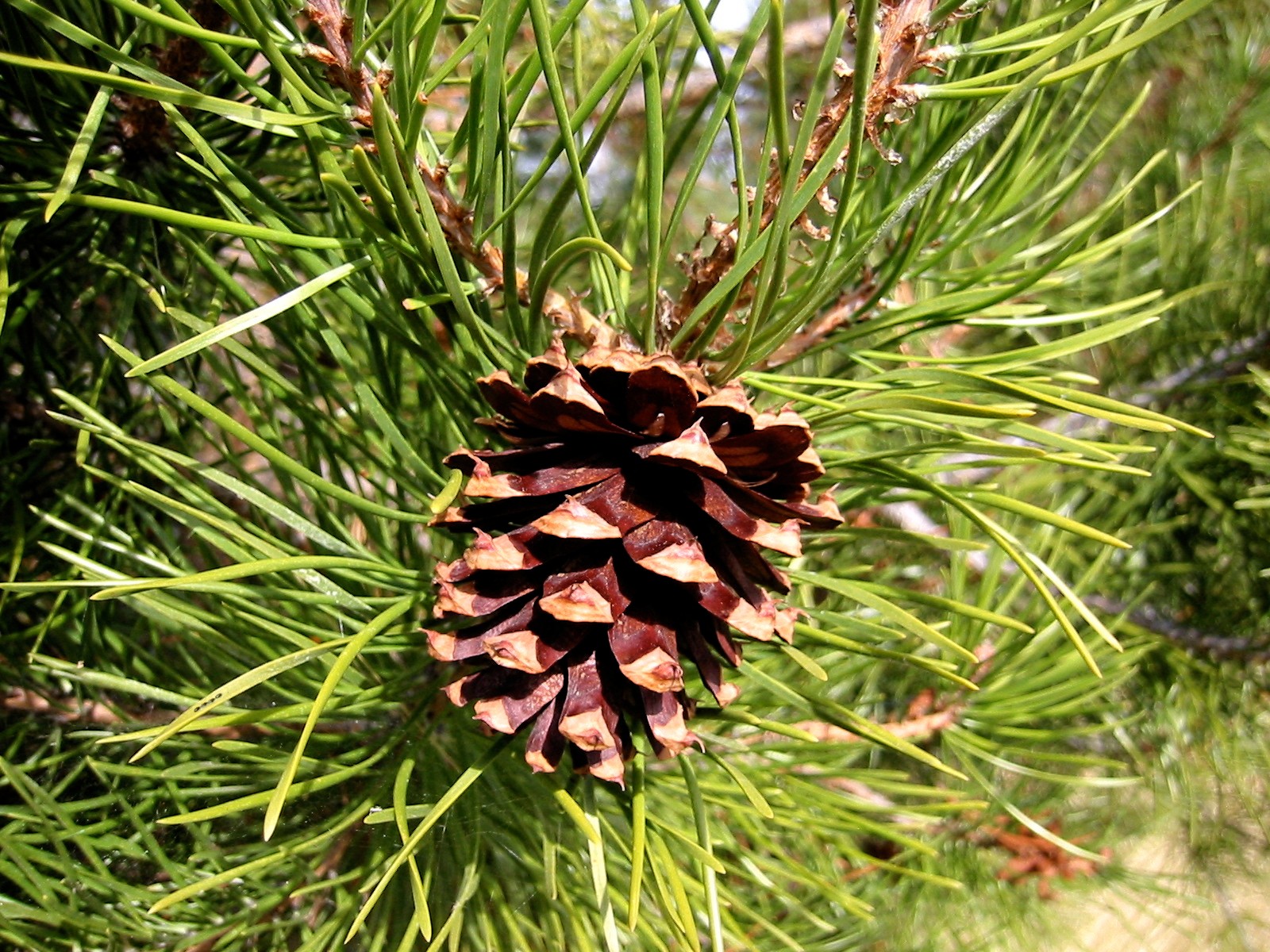
Paper birch (Betula papyrifera) is a common deciduous tree that favours colder climates. It is recognizable for its smooth white bark, which, when stripped away, reveals a light-brown inner bark. This species is an important source of food for many forest animals, such as deer, mice, porcupines and hares. People harvest paper birch and its sap to make a variety of products including syrup, vinegar, panelling and firewood. Both its scientific and common name refer to the thin, papery quality of its outer bark.
The interior of the Aga Khan Garden contains seven constructed wetland banks and a series of plant beds that recreate various wetland soil and water conditions.
Fragrant water lily (Nymphaea odorata) are mostly tropical plants; however, there are nine species that are native to Canada. They are all characterized by large, shield-shaped leaves and eye-catching blossoms, which float gently on the water’s surface. The fragrant water lily is known for its particularly sweet scent.
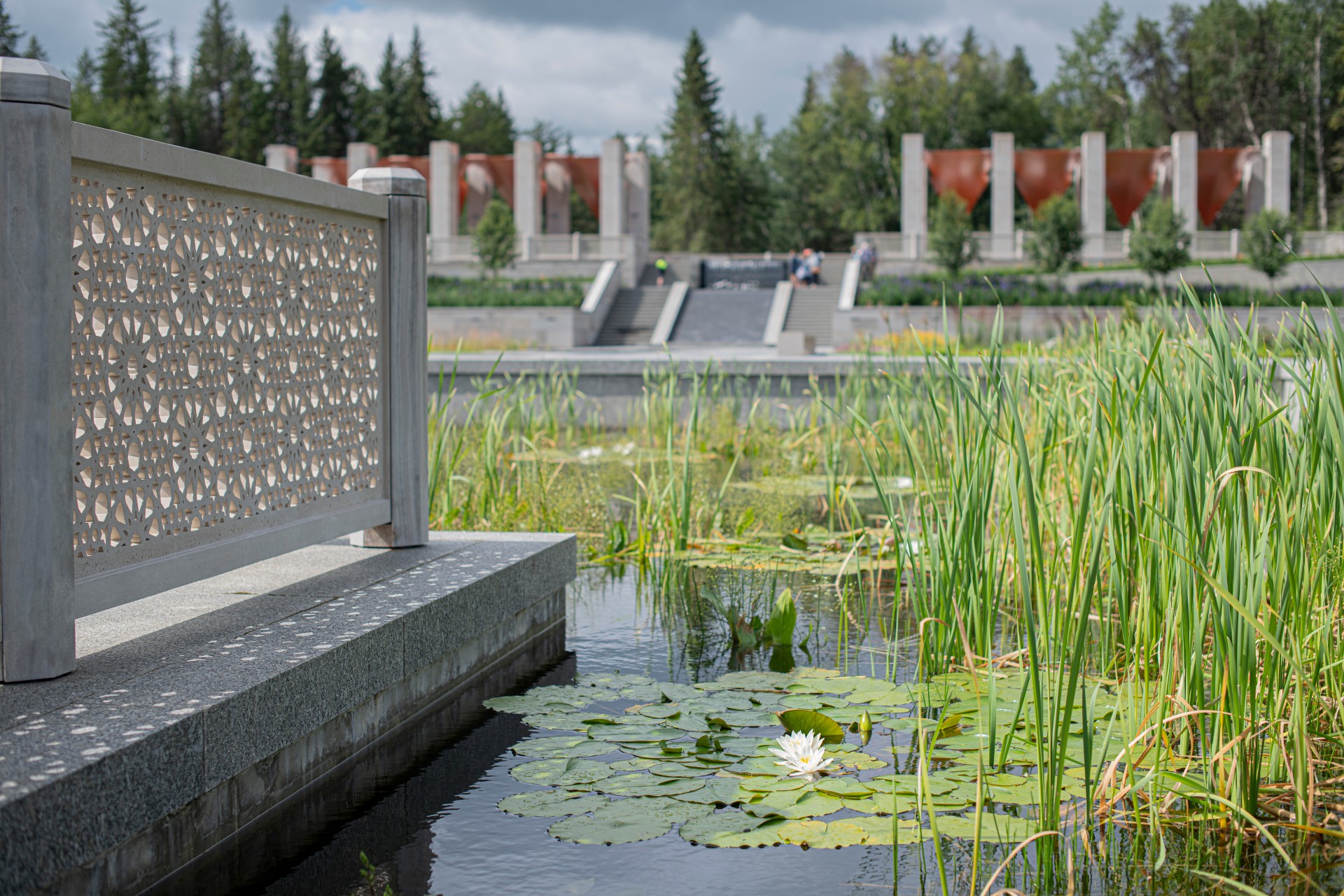
Arrowhead (Sagittaria latifolia) is a perennial plant that is found in and around most shallow bodies of water in North America. It is distinguished by its long leaves, which resemble arrowheads. Its scientific name is derived from the Latin word for arrow, sagitta. This plant is also referred to as “duck potato” since the potato-like tubers that grow at its roots are often eaten by ducks. These tubers were also an important food source for many Indigenous peoples.
Marsh marigold (Caltha palustris) belongs to the buttercup family of flowers. It is a succulent plant characterized by its round kidney-shaped leaves and shiny yellow flowers.
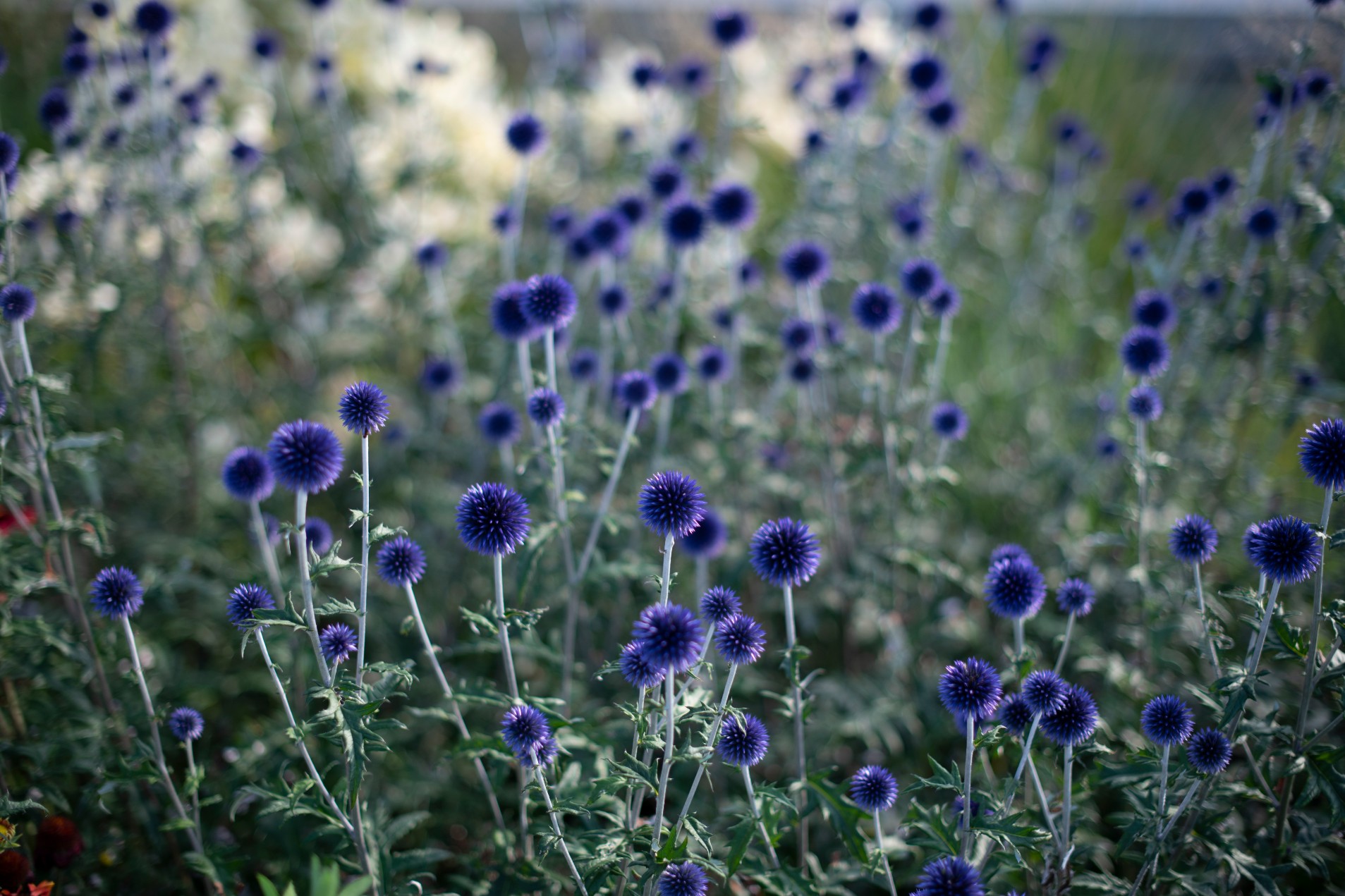
This article originally appeared in the Summer 2020 issue of The Ismaili Canada.